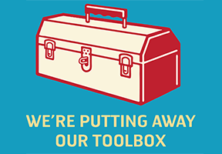Eight reasons to be on Linked In
Why are so many of us on Linked In and not using it? While this “Facebook-for-the-work-world” social media platform boasts 120 million users, a lot of us don’t know why we’re there. We have incomplete profiles, a handful of connections and hardly ever visit.
Most of us signed on because we don’t want to miss out on a useful online, social media opportunity. But, what exactly is the opportunity?
To find out I took a seminar at UBC Continuing Ed last week on the benefits of Linked In. The session was led by Njeri Watkins, an entertainment industry consultant and Linked In enthusiast. She uses the platform to network with the more than 400 professionals she counts as “connections”. She keeps up with various user groups, reads news customized to her interests and follow companies related to her work.
I wanted to know what Linked In offers in the way of marketing and networking opportunities. Is it something I could use personally and for Working Design? Should I recommend it to you – my clients and friends?
Here’s a brief overview of what I learned. There’s a lot to know and I’ll share more in future posts.
Who’s Linked In?
Who will you find in Linked In’s virtual bar? Your clients and colleagues, businesses small and large, job seekers, fellow net workers and recruiters fill much of the space. However, the site’s research capacity, groups, third party applications, reporting procedures, and news updates make it more than a regular meet-up-happy-hour-multi-office-party get together.
1) Networking. This is it. The main reason you and your business want to link in and up. Linked In urges all users to connect only with people we know and trust. This means the virtual bar is filled with people you’re connected to and stand behind.
2) Looking for a service or supplier. For instance, if you’re looking for a pest control specialist or a book editor we can search for them through your network of primary connections. If they’re on your list you can be pretty confident that these leads are valuable and trustworthy.
3) Job and opportunity searching. Linked In will warm up what would have been a cold call. If you want to market your business or personal services to a particular niche – research institutes or sport equipment suppliers for example – you can search for them and see how many of your connections have connections with individuals or businesses in the field. When you make your pitch, you can say that you have people in common and who they are.
Or, if you have connections in those sectors and you are looking to broaden your presence, you can see who your connections are connected with, see where they hang out and who with.
You could also be direct and ask your connections to introduce and recommend you to companies and individuals they know.
4) Groups. Most of us are looking for like-minded people and businesses whether it’s online or in our regular lives. We welcome conversations with other people and professionals about things that interest us and help us do our jobs. Linked In has a feature that lets you search for, find and join any number of groups. If the group doesn’t exist, you can start it
Using the groups, you can simply get information or you can subtly pitch your business and yourself by joining in the conversation or starting one.
Say you’re a freelance editor trying to tap into a larger market. You can explore the numerous Linked In writer and editor groups. Find a few that seem to have networking and employment potential, join and get involved.
5) Following companies. Linked In has researched and lists thousands of companies world wide and provides a range of information about them: number of employees, categories of work (sales, management, IT etc.) the movement of individuals and availability of specific positions. For instance, if you’re looking for a research position with the CBC, you can follow the company and receive related news, see what positions are being offered, who’s been hired and who has left.
6) Contact Information Management. A couple of weeks ago Linked In sent me an email saying that 50 of my contacts had changed jobs in the last year. It had their thumbnail photos connected to the Linked In site and their new contact information.
Those of us who manage and use contact info databases know how useful it is to have access to up to date information. While some of our contacts blast out group emails with change of address info, many don’t. It’s useful that Linked In acts as a central, third party source for this information.
7) News. Linked In has a customized news section that collects information from hundreds of mostly mainstream sources such as nytimes.com or npr.org. Your news page content is based on information you provided in your profile. If you indicated that you’re interested in information technology, sports and glassblowing, your Linked In news page will reflect that and present you with articles about those areas.
8) Your personal website. Linked In can double as your personal website if you are a job seeker or freelancer. It allows you to showcase your main skills, post a cv or your work experience, write about yourself, and show the community what you look like and who you are connected with. And, it’s free.
While there are paid upgrades that increase your scope and ability to use Linked In, relatively few members do so.
One interesting note is that users in the US and UK are much more likely to join and use Linked In than those of us in Canada. Employers and job seekers in both those countries are using the online forum as their primary method of locating each other.
